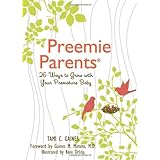By Ronald E. Sharp
Buy new: $4.99
First tagged by SUZANNE FISHMAN
Customer tags: domestic violence(2), emotions, mental health, kindle, kids, children s mental health, child psychology, child care, nonfiction, domestic abuse, dysfunctional relationships
Review & Description
Mark is hiding beneath his bedcovers, shaking, tears streaming down his cheeks. He hears his parents shouting nasty words at each other and the sounds of crashing coming from the kitchen. The last time this happened, his mother got a black eye and a split lip. Mark has come to believe that the fighting is his fault and that he should be able to prevent it.
Elizabeth hides under her bed because she knows what is coming. Her mother climbs the stairs and throws open the bedroom door. She is yelling as she drags her daughter out from under the bed. While beating Elizabeth with a hairbrush, she screams, “I’ll teach you to hit your little brother!”
Jose knows the routine. As he and his father walk into the house, he prepares himself for another tongue-lashing. He struck out three times during the game and will now pay a heavy price for his failure. His father begins with the usual comments about being “disgusted” and “embarrassed.” As he hears the word “sissy,” Jose begins to wish he were dead.
Katrina begins to feel sick in the stomach as her dad sits down next to her on the couch. She knows he is going to touch her in places a father should not touch his daughter. Katrina is confused because her dad is smiling and talking in a friendly voice as he fondles her. She wants to scream, but remains silent because she can smell the alcohol on his breath.
Each of these incidents takes place thousands of times every day in America’s most violent institution – the family. Children are more likely to be murdered, physically assaulted, sexually abused or psychologically injured in their own home than anywhere else. Although the issue of domestic violence is not new, the public has only recently become aware of this national problem.
The National Crime Survey (conducted by the Department of Justice) reported the following: 1) about 1.5 million cases of domestic violence involving children are reported each year; 2) another million cases go unreported and 3) between two and five thousand children die each year because of domestic violence. Domestic violence involving children is more than doubling every decade. While some of this huge growth can be attributed to increased reporting and better record keeping, domestic violence against children is reaching epidemic proportions.
The above statistics include only those incidents in which children were the “direct” target of domestic violence. Millions of other young people endure the “indirect” results of family violence. Because of these experiences, children can suffer from anxiety, depression, guilt and fear. These feelings can follow the child throughout his or her life and the effects can be devastating. Many of these young people mistakenly feel responsible for the violence and some go on to commit domestic violence when they become parents.
Read more






 22:50
22:50
 kaniamazdar
kaniamazdar








































